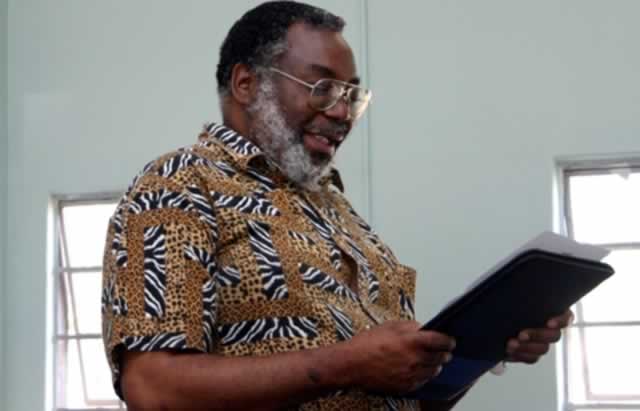Creative arts sector under spotlight


Stephen Chifunyise
Musicians, dancers, theatre producers and cultural policy makers took part in a recent public event to track the progress of Zimbabwe’s creative industries and look at new ways of strengthening capacities of creative professionals.
Together with representatives from the National Arts Council of Zimbabwe, the Ministry of Rural Development, Preservation and Promotion of National Culture and Heritage and civil society, a group of 45 got together to review Zimbabwe’s first Quadrennial Periodic Reporting at the Cresta Lodge in Harare.
The reporting exercise is mandatory for countries which have signed up to UNESCO’s 2005 Convention on the Protection and Promotion of the Diversity of Cultural Expressions. And the aim is to report on policies and measures introduced in the country to implement the 2005 Convention, to identify challenges, monitor trends and share experiences in cultural policy making.
“This reviewing event allowed all key players to cement networks, create new synergies and offer solutions to challenges hindering the creative industries,” said Rev Paul Damasani, Principal Director responsible for Culture and Heritage at Zimbabwe’s Ministry of Rural Development, Promotion and Preservation of National Culture and Heritage. He also emphasised the importance of the 2005 Convention in enhancing sustainable development in Zimbabwe through economic and social means.
Zimbabwe is already planning the future of the creative industries by introducing measures such as the main-streaming of arts and culture education and training into the formal education system at all levels. And creative people are pushing for more support and recognition of their trade.
“We had really good discussions with the Government and we were able to promote and highlight the status of the artists in Zimbabwe who need support and also need to reach out to international markets to be able to support long-term development in Zimbabwe,’’ said Josh Nyapimbi, executive director of Nhimbe, an arts advocacy NGO based in Bulawayo.

Josh Nyapimbi
The creative industries in Zimbabwe contribute around US $100 million per year to the country’s GDP, with 5,4 million people working in cultural industries, according to a study produced by the Culture Fund of Zimbabwe in 2009.
The nation is also home to a plethora of 47 arts and culture festivals — all established after Zimbabwe’s ratification of the 2005 Convention and creative professionals are continuing to push the boundaries to strengthen representation and reach in cultural projects.
Nyapimbi said the periodic reporting exercise for the 2005 Convention provided a unique platform between the government and civil society to discuss how to ensure better representation of women in the cultural policy-making process.
The session was led through the expertise of Stephen Chifunyise and Ayeta Wangusa, members of the UNESCO’s pool of international experts on the 2005 Convention — and the training was carried out thanks to financial support from the Swedish International Development Cooperation Agency (Sida), through its program: “Enhancing fundamental freedoms through the promotion of the diversity of cultural expressions .’’
In the past, UNESCO has also supported the Nhimbe Trust, ZimCopy, Culture Fund of Zimbabwe Trust and Amagugu Heritage Trust through the International Fund for Cultural Diversity – to develop and hold three workshops to train festival managers, leaders of arts associations and back the Symposium on Cultural Policies and Strategies for local authorities. This training resulted in the establishment of the National Plan of Action for Arts and Culture.
The Quadrennial Periodic Report submitted by Zimbabwe will be examined by the Intergovernmental Committee for the Protection and Promotion of the Diversity of Cultural Expressions. — unesco.org.









Comments